“Run for the hills, the carbs are coming!”
Yes, it’s kind of like that. Over the last couple of decades, one thing has been drilled into the heads of pretty much anyone considering losing weight: carbs are evil!
And the fact is, there are indeed some very unhealthy carbs you should avoid. Not just to lose weight, but to avoid serious diseases and live longer.
For the very same reasons, though, there are some very healthy carbs you’ll benefit from eating more.
The “carbs are evil” mindset has driven many people away from all carbs, though, and it is putting many people at risk.
This carb confusion is a likely key reason why a major study from the European Society of Cardiology recently found that a low carb diet can be harmful.
“We found that people who consumed a low carbohydrate diet were at greater risk of premature death,” study author Professor Maciej Banach, of the Medical University of Lodz, Poland, said. “Risks were also increased for individual causes of death including coronary heart disease, stroke, and cancer. These diets should be avoided.”
The truth is, our body depends on healthy carbs to draw on energy that powers us through the day.
Healthy carbs can do everything from making us feel fuller longer to providing us with a spectrum of vitamins and minerals that are essential to protect us from diseases.
So, let’s unravel the myths surrounding what constitutes healthy carbohydrates.
I’ll explain the difference between complex carbs and simple carbohydrates.
Then, just so you have specific examples of the good guys, I’ll provide you 20 Top Healthy Carb Foods. So, without further adieu…
What are Carbohydrates?
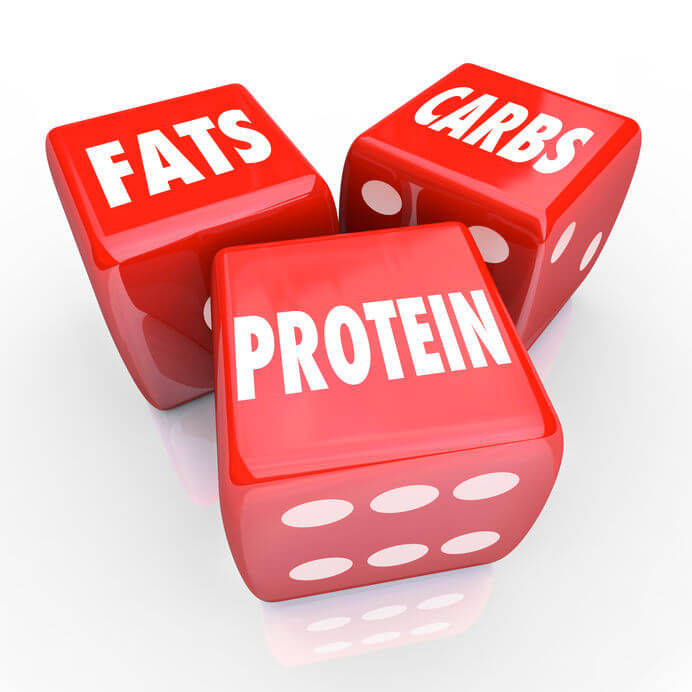 Carbs are one of three primary macronutrients your body needs to help you look your best, feel your best, and live a long life doing it.
Carbs are one of three primary macronutrients your body needs to help you look your best, feel your best, and live a long life doing it.
For a balanced meal, you should include these three macronutrients on your plate:
- Protein
- Fats
- Carbohydrates
Each plays a pivotal role in helping our bodies be their healthy best.
In short, the purpose of carbs is that our body converts these molecules into glucose. Glucose is the energy that fuels us through our day.
However, don’t just run off to the bakery for a baguette just yet.
Because as I noted at the start, not all carbohydrates are healthy carbs.
Let’s discuss the differences.
What are Healthy Carbohydrates?
There are two primary types of carbohydrates that your body uses to convert into energy. They are sugars and fiber. Many fruits produce carbs such as fructose and sucrose. Meanwhile, whole grains contain an abundance of healthy carbs known as fiber.
However, you can also get a dose of sugar and fiber from refined and simple carbs. Simple carbs like mass-produced yogurt are typically high in refined sugars that may cause obesity or diabetes.
Refined carbs like white pasta, meanwhile, just add empty calories to your system.
So, how do you know the difference between complex carbs, simple carbs, and refined carbs?
Here is how you know you are choosing healthy carbs.
Differences Between Refined, Simple, and Complex Carbs
The most important rule of thumb is that you want to eat foods in the whole form whenever possible.
As food gets processed, it begins to lose its complex carbs status.
Let’s look at the differences between the types of carbs.
Refined Carbs
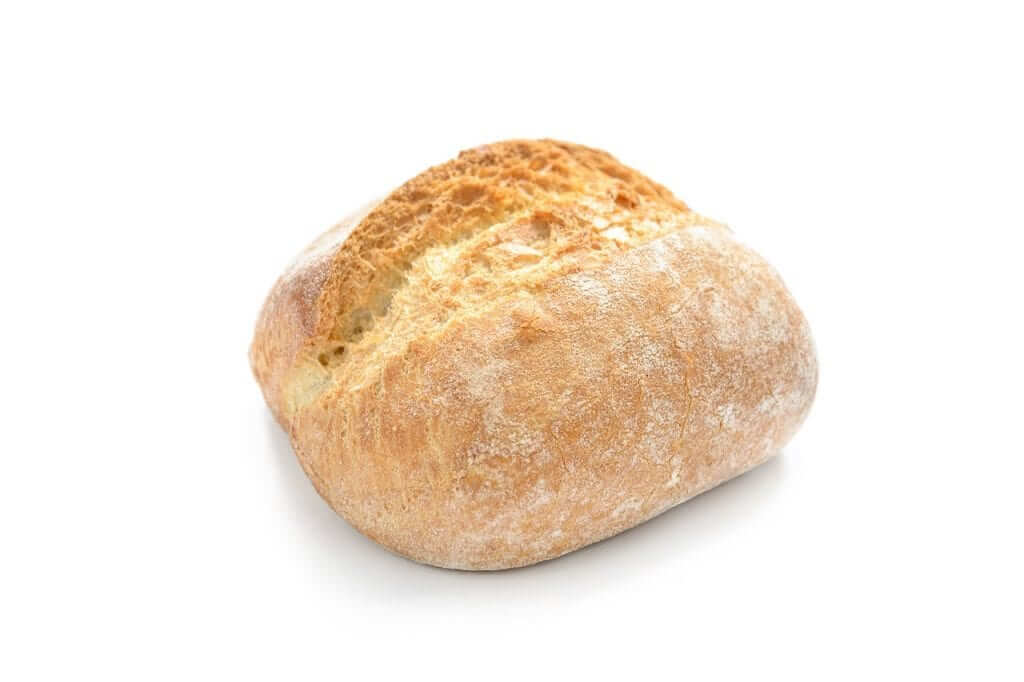 Refined carbs are the unhealthiest of the bunch. They have been stripped of dietary fiber. Fiber comes from the hull, bran, and germ of plant-based dietary options.
Refined carbs are the unhealthiest of the bunch. They have been stripped of dietary fiber. Fiber comes from the hull, bran, and germ of plant-based dietary options.
Due to its structure, fiber is indigestible to the system. Therefore, it sits in your gut and serves as food for probiotic bacteria. Feeding probiotics are essential for overall wellness. As probiotic bacteria grow, they fight off free radicals and inflammation that may cause chronic illness.
Unfortunately, many mass-produced carbs strip this essential nutrient from their product. Manufacturers claim it’s to make products more visually appealing and tastier.
Consequently, on top of losing fiber, other nutrients are also missing from refined carbs. Therefore, you’re just ingesting empty calories void of nutritional value.
If you want to look great, feel great, and live long, a simple rule is to steer clear of anything white and refined, such as pasta, flour, and white breads.
Simple Carbs
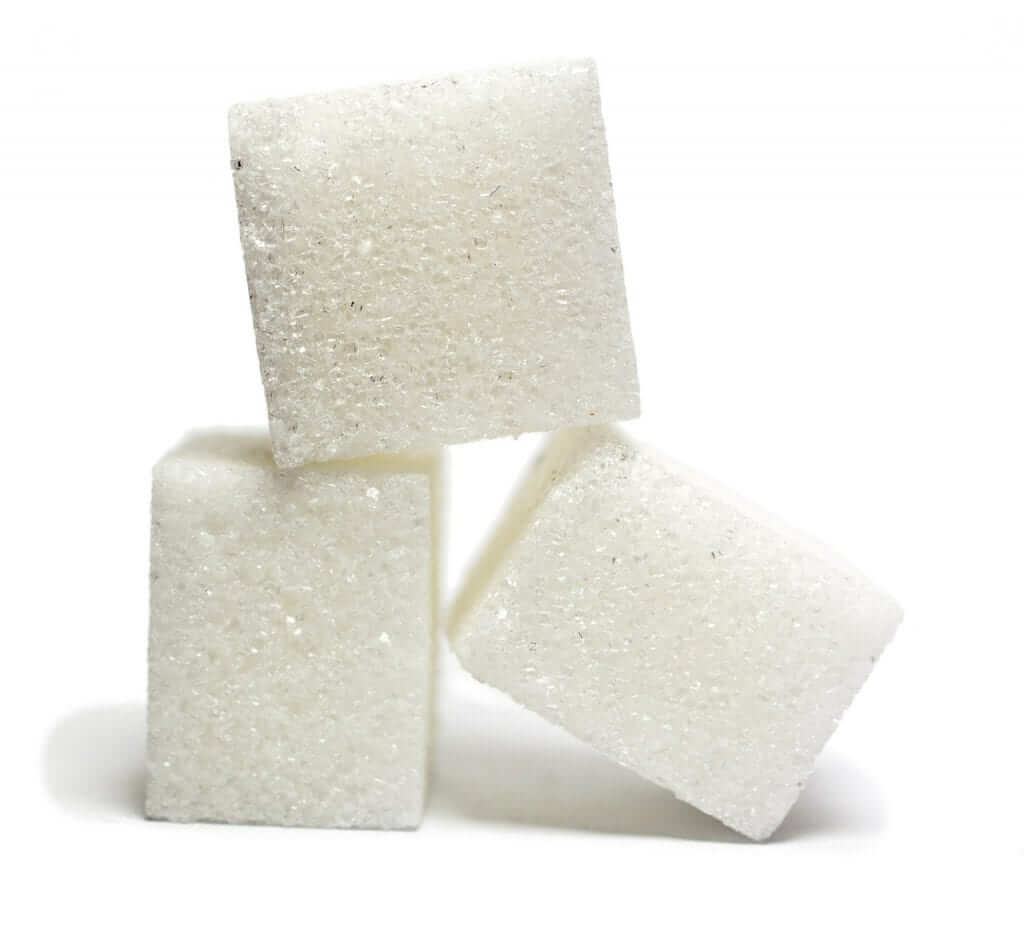 Simple carbs get their name thanks to their molecular structure. On a genetic level, they’re considered simple because simple carbs are just 1-2 sugar molecules.
Simple carbs get their name thanks to their molecular structure. On a genetic level, they’re considered simple because simple carbs are just 1-2 sugar molecules.
The most common simple carbohydrates include:
- Fructose (Fruit)
- Lactose (Dairy)
- Sucrose (Table Sugar)
While simple carbs are not considered healthy carbs, a “dose” of the right type of simple carbs can be great for giving you a quick boost of energy.
What’s key is the source of the simple carbs, and here again the rule is to get them from whole food sources.
Because yes, while eating whole fruits like organic apples does put simple carbs into your body, those same fruits also provide you very healthy complex carbs. Whole fruits also provide a range of other important nutrients your body needs.
Unfortunately, though, most people today consume far too many simple carbs from processed foods.
These simple carbs are in the form of sucrose (sugar), corn syrup, high-fructose corn syrup, and other sweeteners, and they are key causes of obesity, cancer, heart disease, and other prevalent diseases.
In general, the closest a food is to how nature made it, the better it is… even if it does contain some simple carbs.
Complex Carbs
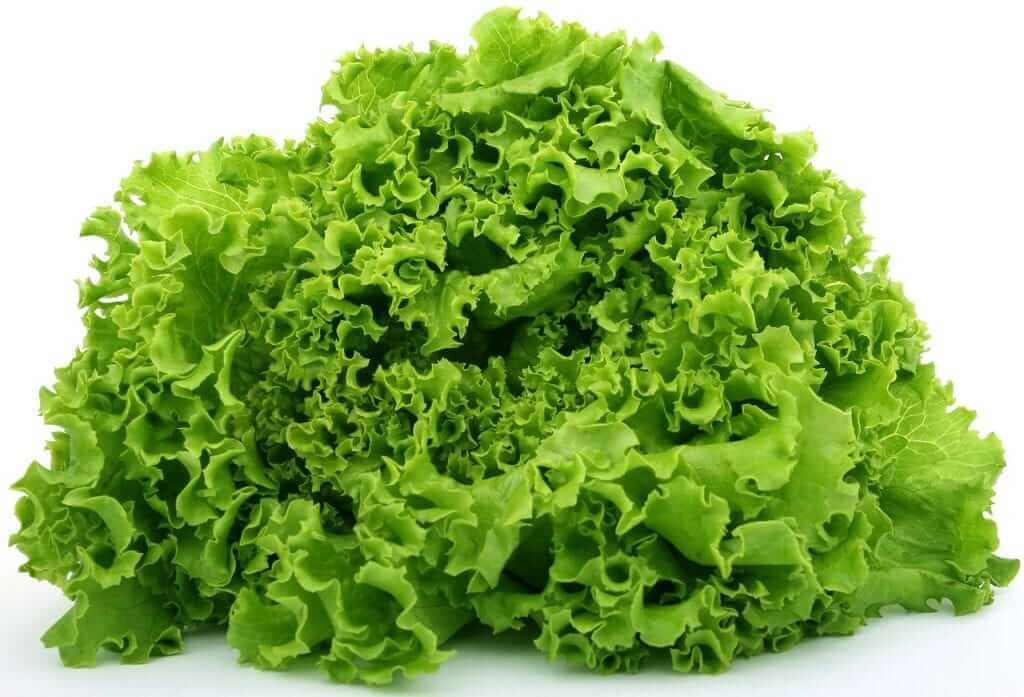 Complex carbs are healthy carbs.
Complex carbs are healthy carbs.
Like other carbohydrates, the nucleus of a complex carb is a sugar molecule. However, sugar molecules in complex carbs become intertwined with other beneficial nutrients and fiber.
What’s makes these sugar molecules healthy carbs is due to how long their chain is. Since our body takes extra time to digest carbohydrates, you want carbs that have a long-chain full of beneficial vitamins and minerals.
As the bacteria in your system break down the solid matter, micronutrients are introduced to your system. These nutrients can help in everything from digestive issues to cell rejuvenation to improving your mood.
Healthy carbs come in two main categories:
- Starches (Roots, Tubers, Whole Grains, Peas, Corn)
- Fibrous (Broccoli and Other Cruciferous Veggies, Leafy Greens, Berries)
While you don’t want to overeat starchy carbs, they are very good for you, and can give you both instant and all-day energy.
Meanwhile, the “superstar” carbs you’ll want to consume the most are the fibrous carbs.
High-fiber whole foods are typically very low in calories, and fiber has a wide range of important health benefits. For example, it’s key to achieving a healthy weight, healthy metabolism, healthy cholesterol, regulating blood sugar, and regulating bowel movements (i.e., happy and healthy pooping!)
And if you are seeking to lose weight, you’ll love the fact that fibrous carbs help you feel full. That’s why at least half of any meal you eat should contain whole organic high-fiber foods!
So, bottom line, when it comes to healthy carbs, you shouldn’t be “running for the hills”… you should be embracing them!
And now that you have a better understanding as to what constitutes healthy carbs, let’s take a look at some of the best complex carbs out there:
20 Top Healthy Carbs
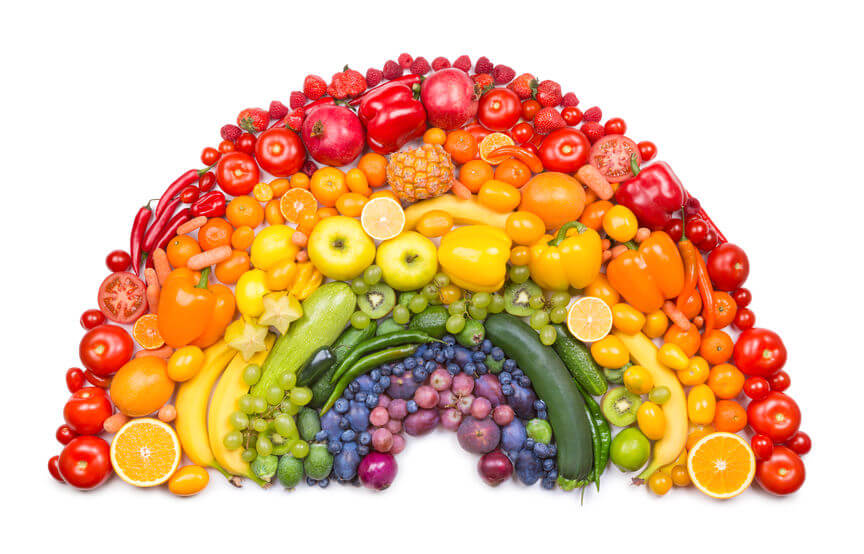
Truth of the matter is, no exact science can rank the top 20 healthy carbs.
Every food offers its own variety of vitamins and minerals. That noted, what follows are instead 20 of the top healthy carb foods you’ll want to consider eating more of in your daily diet, with explanations of why.
Nature provides us many other top-notch healthy carb foods to choose from, as well, so consider these foods a guideline that also incorporates the food principle of “eating from the rainbow.”
If you haven’t heard of “eating from the rainbow,” it basically means you should try to eat as wide of a variety as possible of different-colored whole and organic foods each day.
Eat a red apple, a handful of blueberries, a bunch of leafy greens, an orange carrot, and so on and so forth, for example.
The color of food is known as pigmentation. Pigmentation is determined by the chemical compounds present within the food.
For instance, you can credit the orange in carrots to beta-carotene, while chlorophyll gets the nod for broccoli’s earthy hue.
By eating the rainbow, you can best ensure you are getting a wide variety of micronutrients.
Now, here are 20 of the top healthy carbs you’ll want to consider routinely eating, along with why.
NOTE: You’ll want to choose organic on these whenever you can. If you can’t, at least wash ‘em really, really well!
1) Sweet Potato
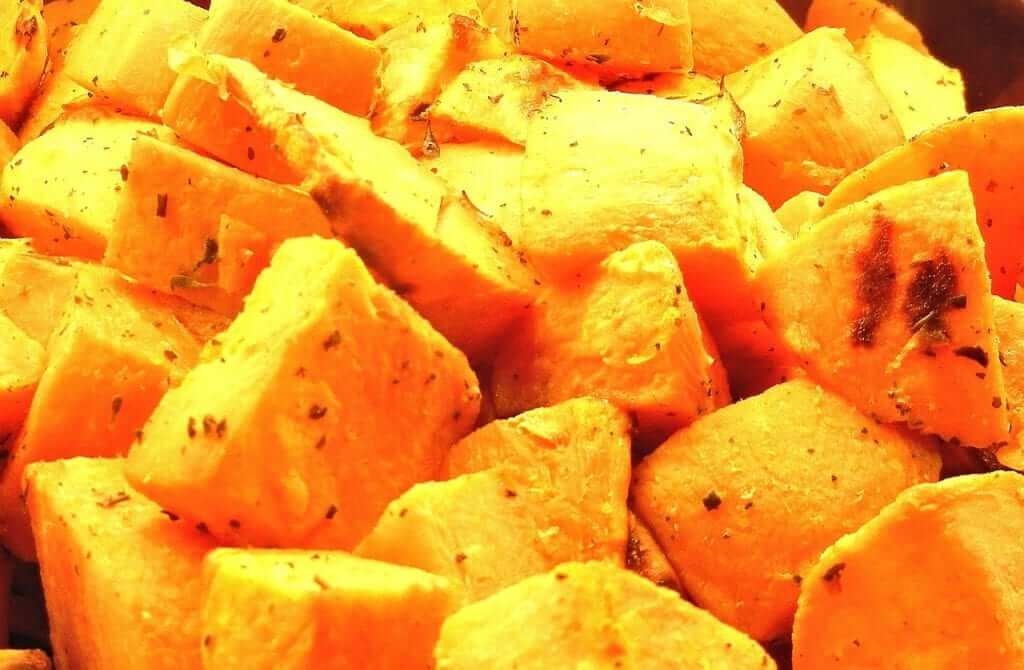
Sweet potatoes are a staple in the world of complex carbs. What gives this tuber the nod in top foods full of healthy carbs is that it has both soluble and insoluble fiber.
Soluble fiber helps add bulk to our stool, aiding us with gastrointestinal issues such as diarrhea. Meanwhile, insoluble fiber helps your intestines absorb water. This action softens your stool, making it easier to pass.
2) Amaranth
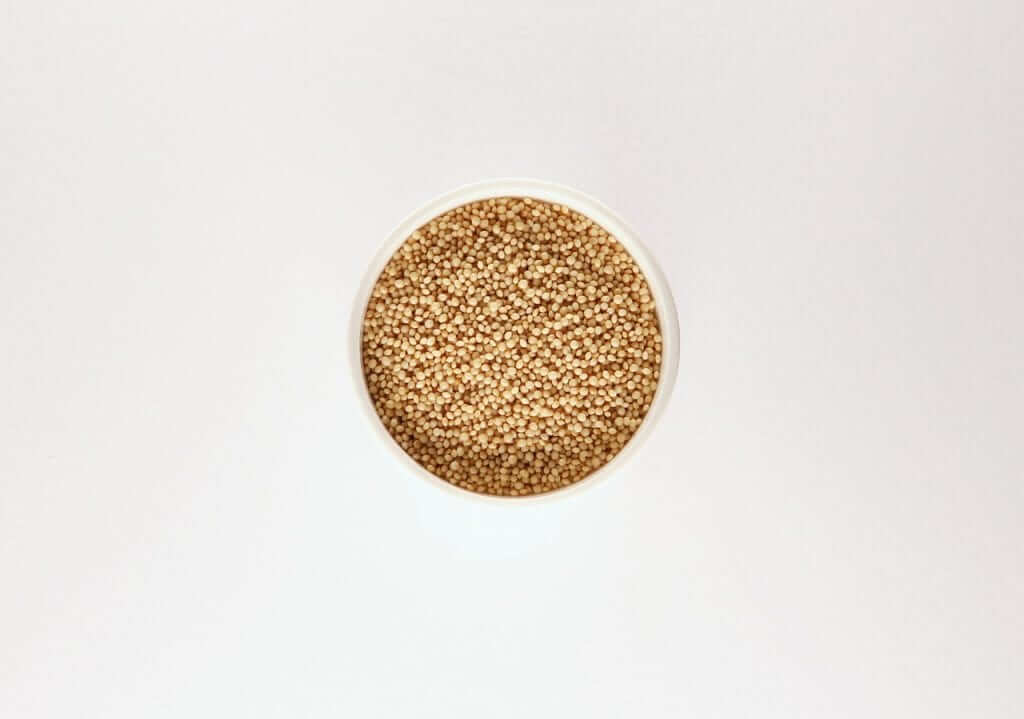
This gluten-free grain is a high-quality source of protein. Just one cup of cooked amaranth boasts a whopping 9.3 grams! While those who follow a Standard American Diet get an adequate amount of protein, our protein sources aren’t always the best choices.
The most popular protein source is animal fat. Research indicates the animal fats have elevated levels of LDL cholesterol. Amaranth is a plant-based protein that boasts zero cholesterol and contains fiber. Not only will it provide you with the amino acids necessary for healthy bones and muscles, but amaranth can also help you flush out toxins and won’t add to your LDL cholesterol levels!
Barley
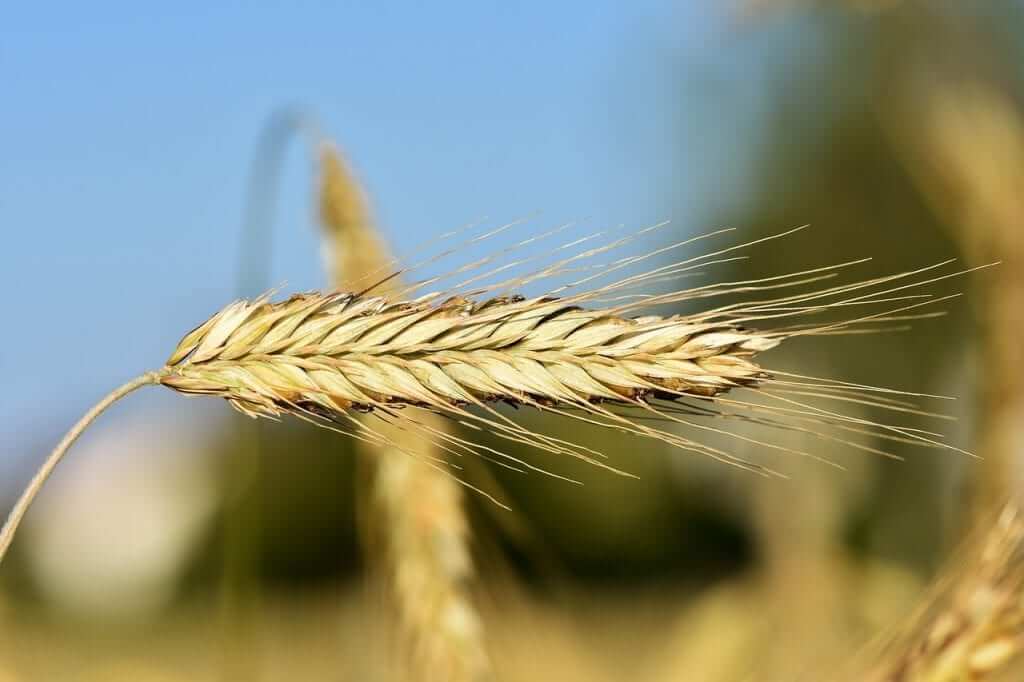
This grain has a nutty flavor and chewy texture. It deserves a wider audience beyond beer because many agree it tastes great, is easy to prepare, and you feel good after eating it.
Barely is high in soluble fiber. In particular, it contains an abundance of beta-glucan.
Beta-glucan forms a gelatinous substance within the gut. The texture of beta-glucan assists your body in showing toxins and dead cells out of the system. Due to its slippery nature, gut motility is improved, easing digestive pains.
Like pouring crazy glue into a crevice, beta-glucan spreads out to take the shape of the space its in. Therefore, foods rich in beta-glucan makes us feel full, curbing our penchant for over-eating.
Blueberries
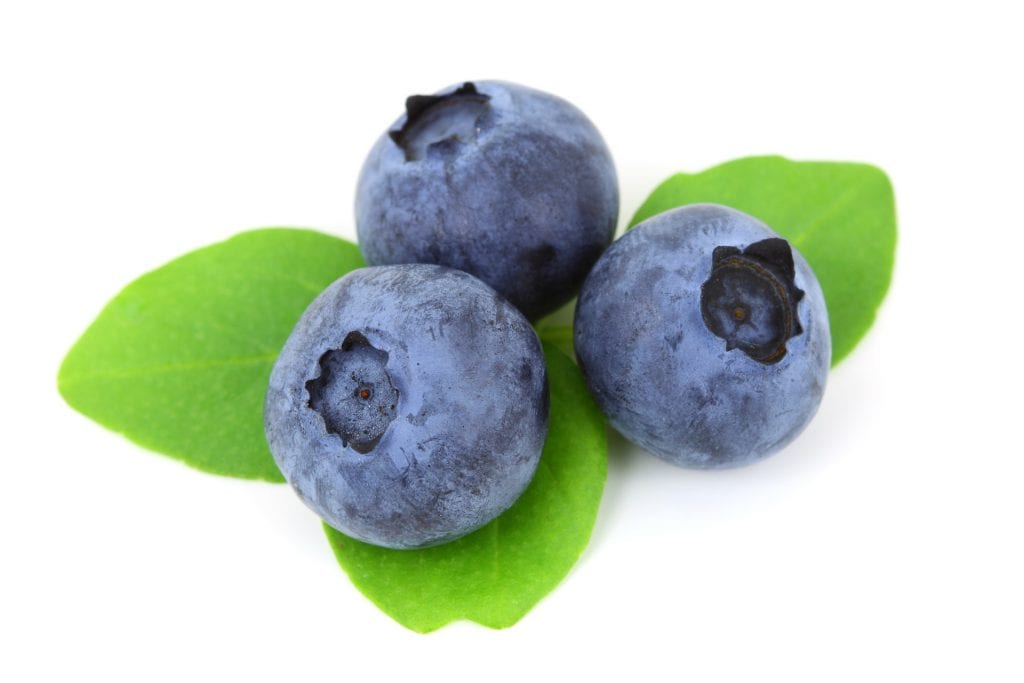 Blueberries pull double duty, as they’re classified as superfruits and healthy carbs. What makes blueberries so beneficial to the system is that they are rich in antioxidants. One antioxidant in blueberries that has shown restorative behavior is anthocyanins.
Blueberries pull double duty, as they’re classified as superfruits and healthy carbs. What makes blueberries so beneficial to the system is that they are rich in antioxidants. One antioxidant in blueberries that has shown restorative behavior is anthocyanins.
Anthocyanins are what gives fruits and vegetables with red, purple, and blue hue their distinct tones. These flavonoids are also what gives blueberries their vascular benefits. Pigmentation in blueberries may help repair DNA damage caused by free radicals and also assists in clearing out debris created by dead cells.
Lastly, blueberries contain elevated levels of ursolic acid. Ursolic acid is what gives blueberries their waxy texture. It also helps the body put on muscle mass and increase brown fat tissues. Brown fat is more accessible for our body to burn than white tissue. Higher levels of brown fat equate to less clutter around the waist.
Acorn Squash
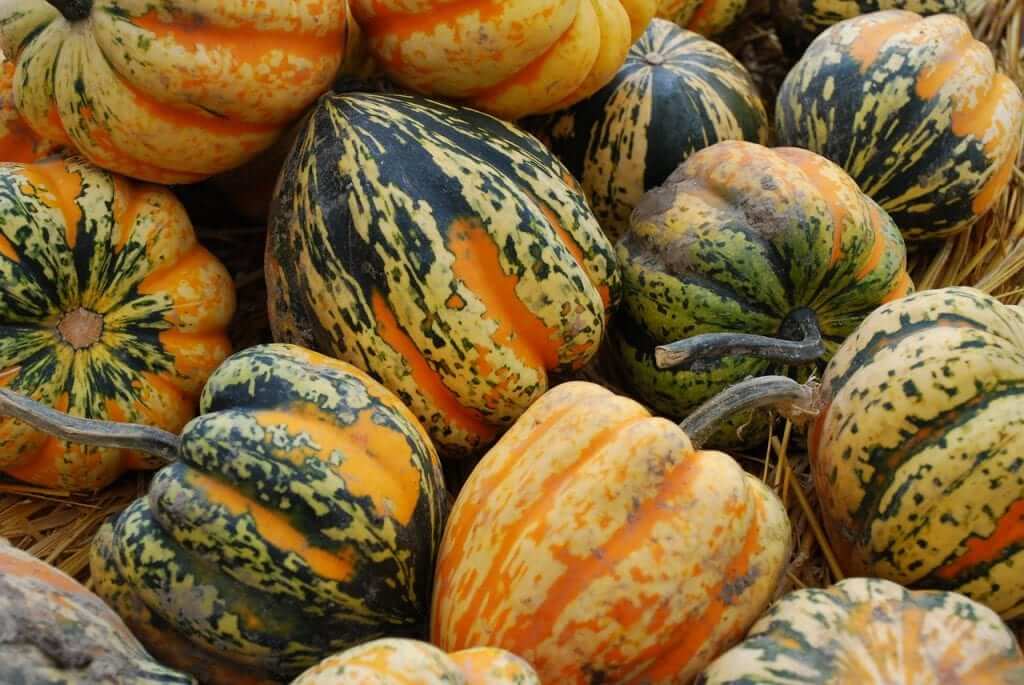
It doesn’t need to be autumn to fall in love with acorn squash. Acorn squash is a complex carb that is rich in micronutrients. In particular, it has a high level of antioxidants.
As indicated by the color of its flesh, acorn squash has an abundance of beta-carotene. Beta-carotene is the precursor to the renowned antioxidant, Vitamin A. Vitamin A is essential for repairing damaged skin cells, making this mineral a staple in many beauty products.
In addition, acorn squash boasts a high amount of Vitamin C. Vitamin C is the precursor to collagen. As any aging person knows, we need collagen to keep our youthful glow. Without collagen, flesh wounds repair at a slower rate, and we start to lose elasticity in our skin.
Black Beans
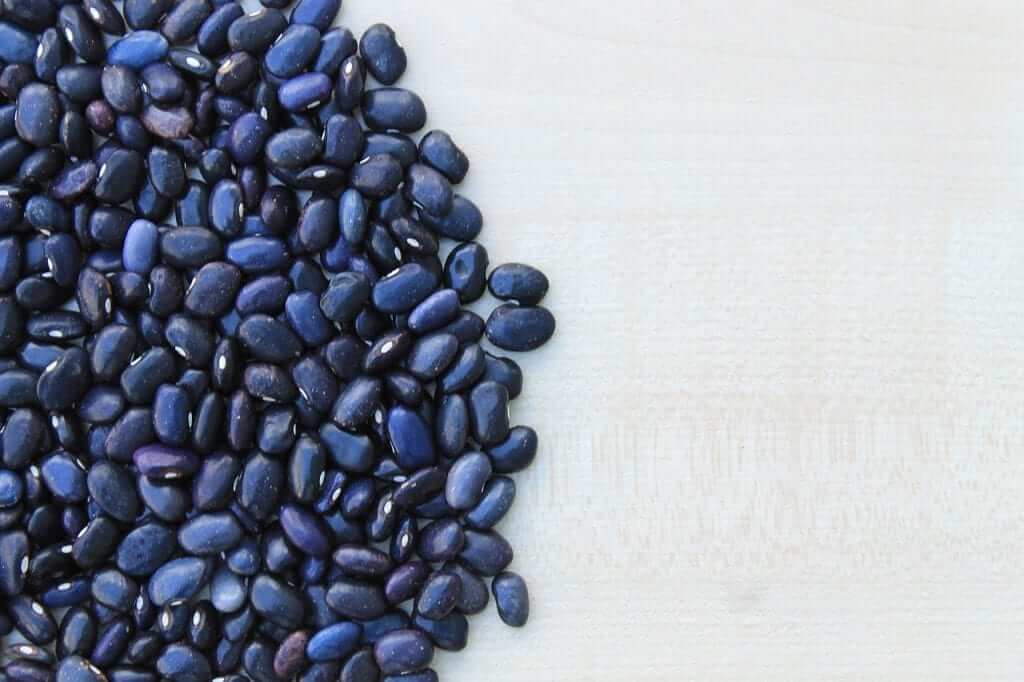
You know the old song, “Beans. Beans. They’re good for the heart. The more you eat, the more you…” Yeah, you get the point. However, this rhyme doesn’t lie. These complex carbs are fantastic for your cardio health.
Black beans have a significant level of flavonoids including delphinidin, malvidin, and petunidin. These particular flavonoids regulate how our body metabolizes fat. In turn, they help us burn off LDL cholesterol.
Further driving home the heart-healthy aspect, black beans have an abundance of magnesium and folate. Both are minerals that we run the risk of having a deficiency in by following the Standard American Diet. Unfortunately for those with nutrient deficiencies, magnesium and folate play a crucial role in maintaining the health of our heart.
Quinoa
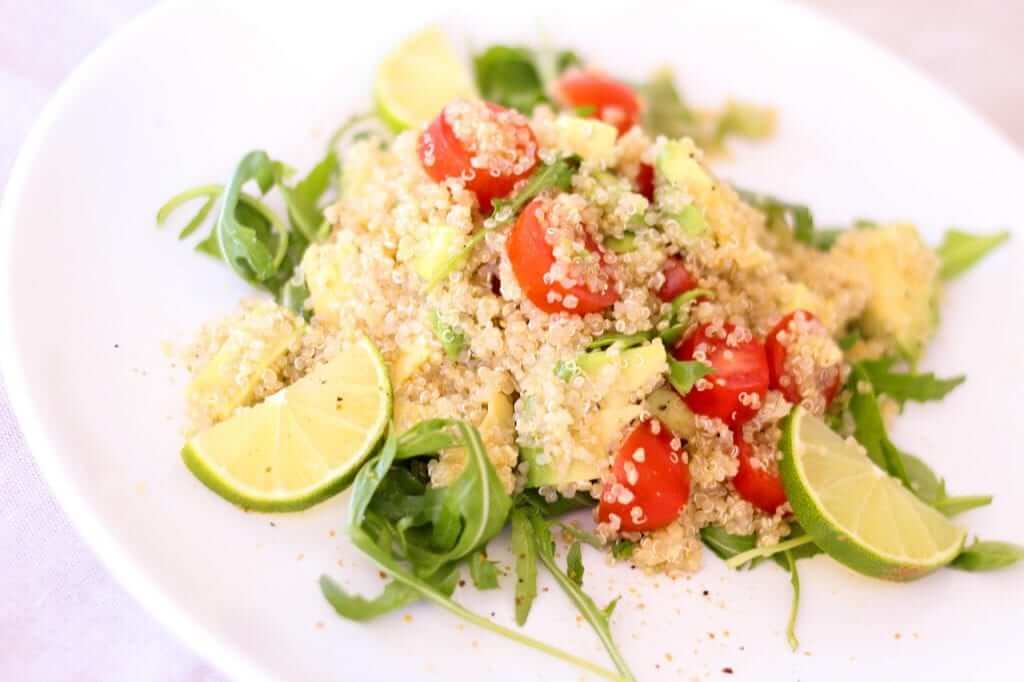
21 known amino acids are necessary for human beings to function. Our bodies can produce all but nine of these amino acids. We must get the rest through our diet. Unfortunately for the health-conscious, a majority of these essential amino acids are found in animal-based products.
Quinoa is such a powerhouse in the world of plant-based living because it has all 21 amino acids, including the elusive nine. This distinction makes these healthy carbs a complete protein.
If the quality of protein isn’t enough of a reason to love quinoa, this whole grain also an abundance of fiber. In fact, quinoa contains more fiber than most other complex carbs. With high protein and fiber levels, quinoa provides two out of the three primary macronutrients in one sitting.
Spinach
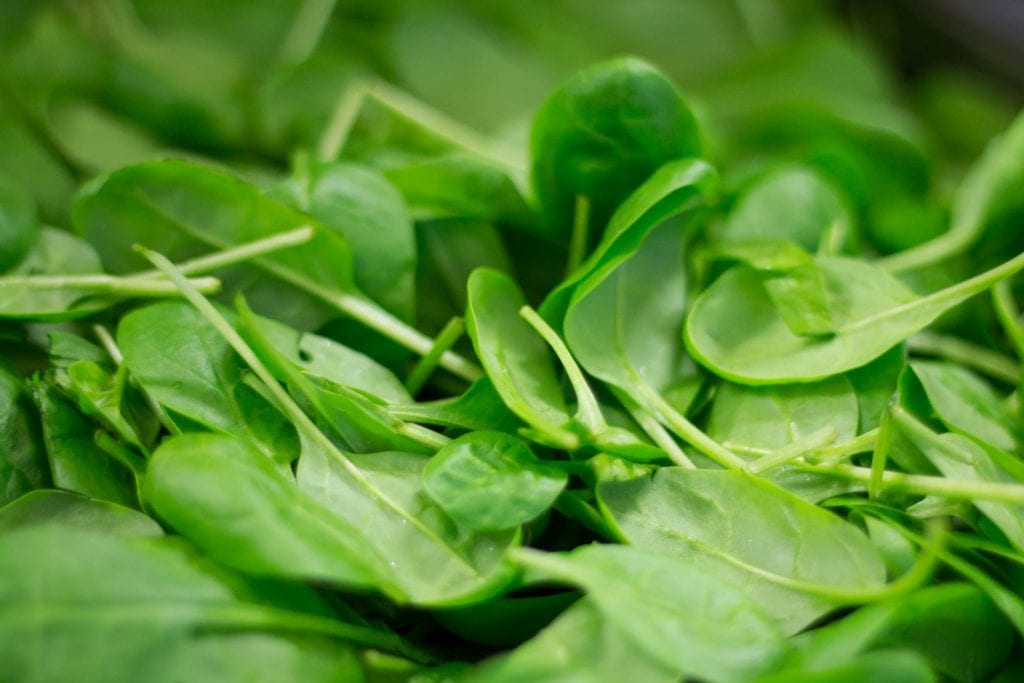
Now onto Popeye’s favorite of the complex carbs, spinach. What makes spinach one of our favorite healthy carbs is its wide variety of micronutrients. In particular, spinach carries a litany of alpha-lipoic acid.
Alpha-lipoic acid is a potent antioxidant responsible for maintaining blood glucose levels. Studies show that alpha-lipoic acid simultaneously increases insulin sensitivity. These 2-for-1 benefits make spinach one of the top healthy carbs for people with diabetes to consume.
Bananas

These tropical fruits are an excellent source of potassium. With one medium banana containing 9% of the daily recommended intake of potassium, marathon runners love to stock up on these fruits to fight off cramping. However, there’s more to these healthy carbs than keeping cramps at bay.
The high concentration of potassium in bananas make these complex carbs a kidney-healthy food as well. A 13-year study on women who ate bananas two to three times per week found that this dietary routine reduced the subjects’ risk of kidney disease by 33%!
Couscous
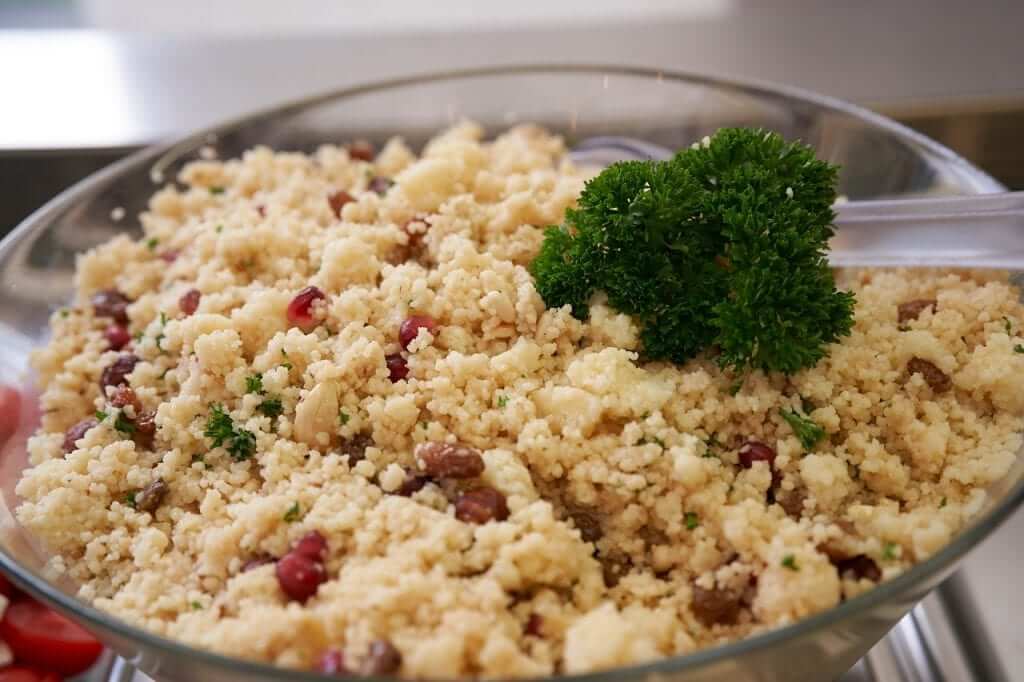
Couscous is versatile complex carbs. Whether you choose the Israeli, Moroccan, or Lebanese varieties, these little pearls of grain and flour can be a side dish extraordinaire or the main entree. What makes couscous such healthy carbs is that these foods are rich in selenium, to the tune of 60% of the daily recommended intake in just one cup!
Selenium is an essential mineral that plays a role in many bodily functions. Namely, selenium helps regulate thyroid health. When we are under immense stress, our thyroid gland goes into overdrive. This shift in balance can throw off our hormones.
Luckily, molecules within selenium, known as selenoproteins, remove iodine atoms from the middle ring of thyroid hormones. Upron removal, the particles won’t charge the thyroid gland, no longer throwing the system off-balance.
Apples
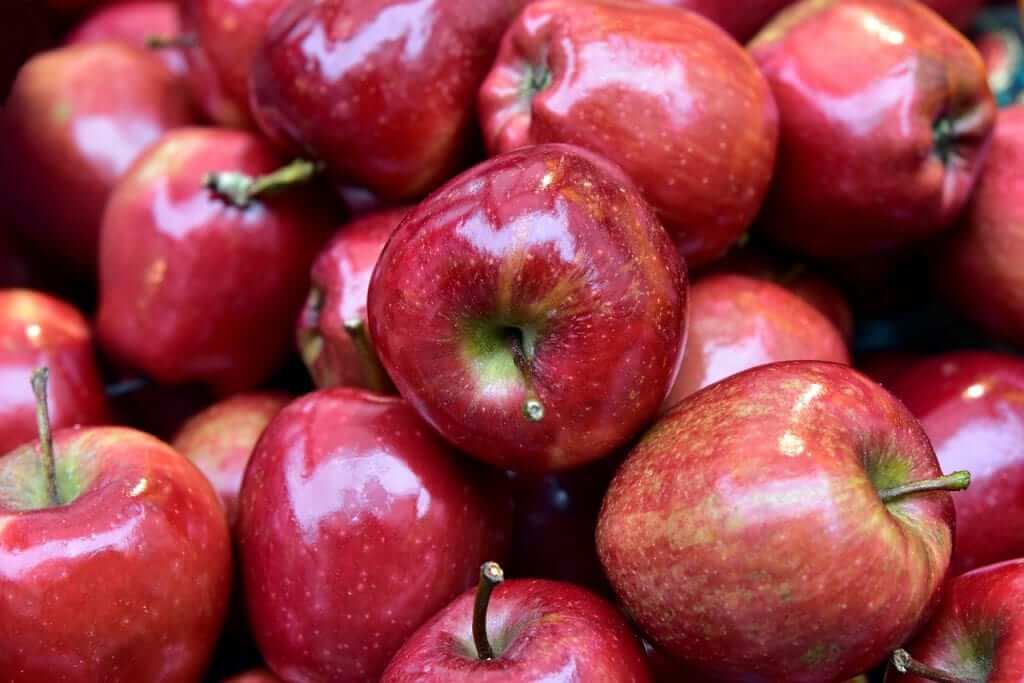
While the black beans rhyme may have gone a bit overboard, this old classic isn’t cringe-worthy: ”An apple a day keeps the doctor away.”
Apple peels and flesh contain a bevy of nutrients that can help improve your overall health. Plus, apple fibers make for excellent prebiotics. Much like sweet potatoes, apples are ideal food sources for healthy bacteria living in your gut.
While the probiotics feast on apples, these healthy carbs release two molecules into the system that have shown promise in repairing gut lining. Research indicates chlorogenic acid and catechin in apples improve nitric oxide levels in the system.
This gas is essential for clearing arteries and gut lining of dying tissues and dead cells. With this debris being cleared out, it leaves less room for free radicals and inflammation to grow.
Broccoli
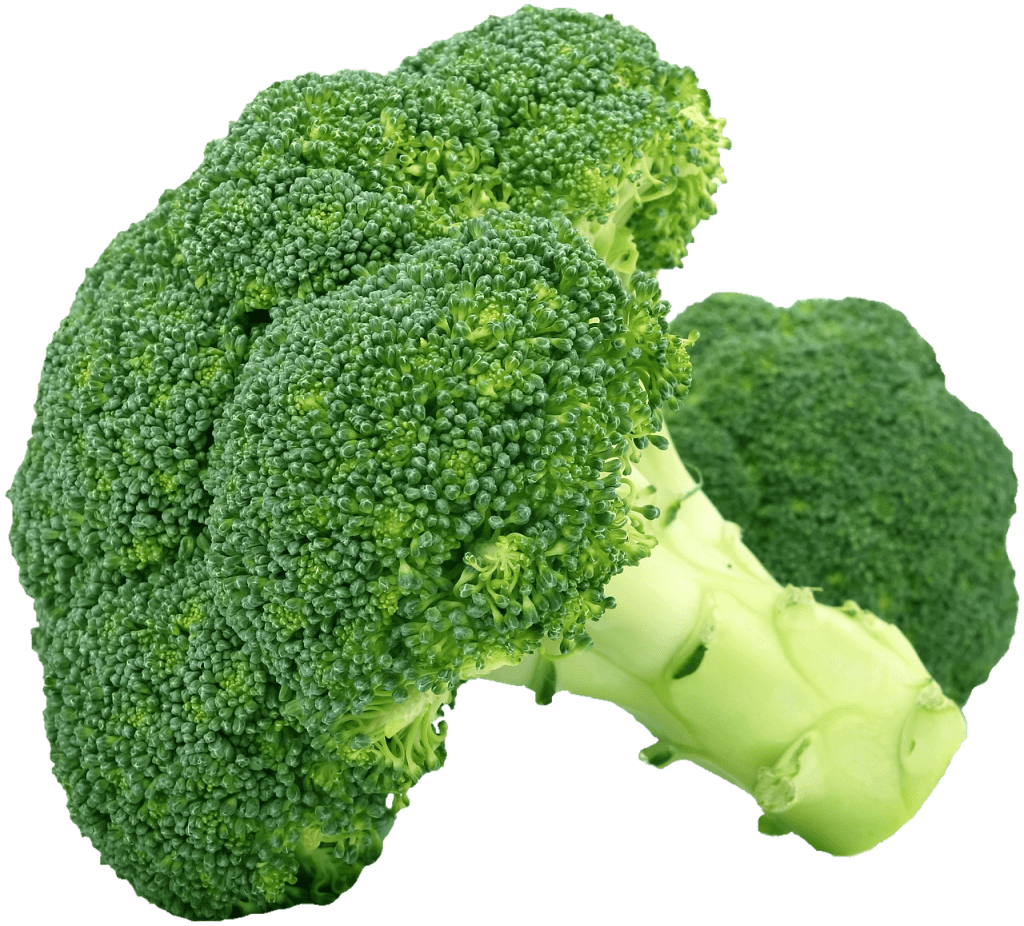
Broccoli may give your inner child a bout of post-traumatic stress. However, the cells in your body don’t feel the same. In fact, broccoli helps bring the youthful glow back to those cells.
This cruciferous green has ample levels of sulforaphane. Research suggests that sulforaphane plays a crucial role in the regeneration of neural cells. The reason for this beneficial reaction is because sulforaphane exhibits antioxidative-like capabilities.
In particular, this compound in broccoli suppresses the growth of interleukin-1b (IL-1b). Interleukin-1b (IL-1b) is a pro-inflammatory biomarker that may destroy brain cells, leading to cases of dementia.
Buckwheat
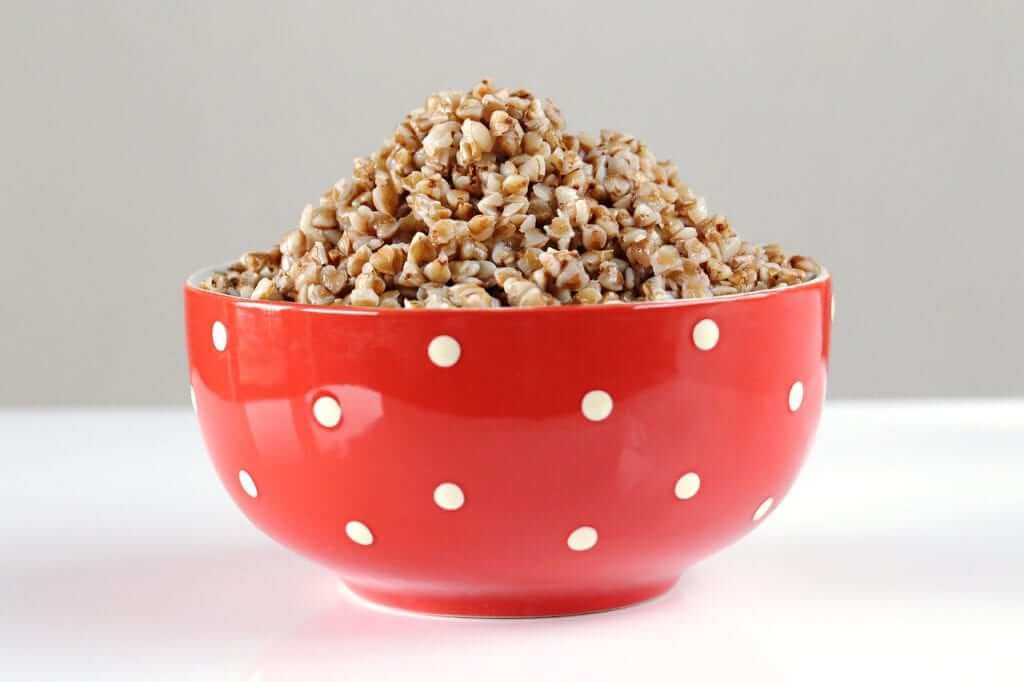
No, not the character in The Little Rascals. I’m talking about the seed. And yes, though it has wheat in its name, this gluten-free food is actually a seed. For such a little seed, buckwheat packs a load of nutrients, making it one of the top healthy carbs.
One of the unique compounds found in buckwheat is rutin. Rutin is a potent antioxidant that exhibits many benefits for cardiovascular health. Research indicates that rutin reduces levels of myeloperoxidase (MPO). MPO is an immune response created by our body.
When there is an invader in the system, MPO is the first step in fostering an inflammation to rid the body of the intruder. By wiping out MPO, rutin also lowers the possibility of an inflammatory response.
Sprouted Bread
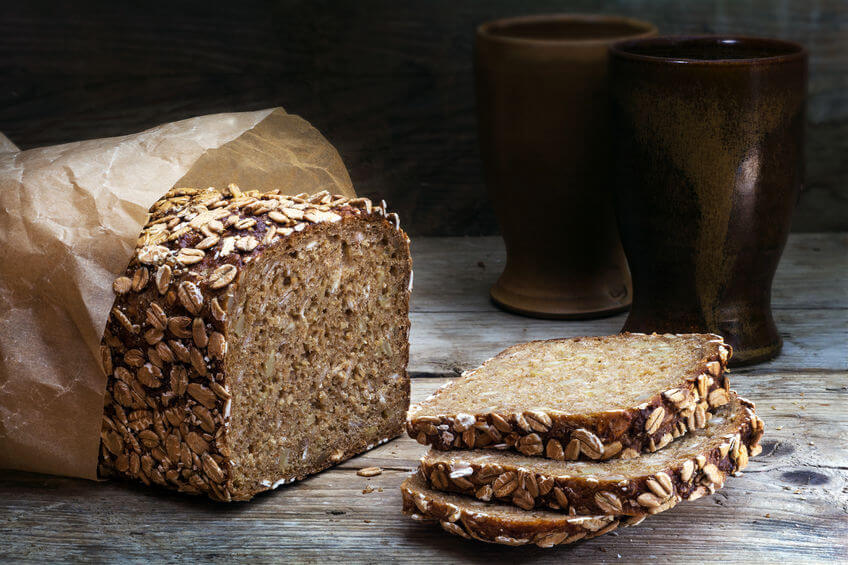
As the name suggests, sprouted bread contains whole grains that have just started to germinate. When seeds begin to sprout, a plant begins to grow. During these time periods, nutrients are pushed out from the core of the seed. This process makes the minerals more readily available for those who consume these healthy carbs.
Anyone with Irritable Bowel Syndrome (IBS) can attest that seeds aren’t the easiest foods to digest. Healthy carbs like legumes and seeds have naturally occurring phytochemicals that block the absorption of nutrients and digestion of solid matter. One of the most abundant of these disruptors is phytic acid.
Phytic acid is so intrusive that even soaking grains and cooking seeds can’t destroy it. However, sprouting decreases the amount of phytic acid in the food. In fact, some sprouted breads may have up to 50% less phytic acid, making for easier digestion.
Lentils
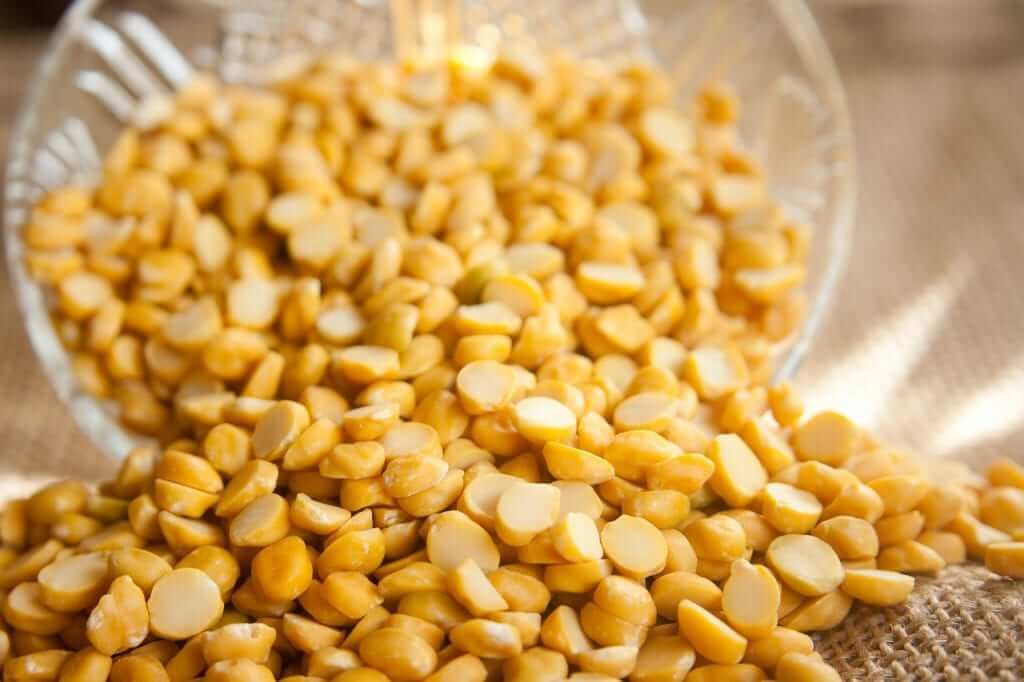
Lentils come in many colors…and with even more benefits! These legumes have a vast array of phytochemicals present. Having such a spectrum of nutrients is essential for keeping inflammation low in the body.
One of the primary phytochemicals found in these healthy carbs is procyanidin. Procyanidin is vital in fighting off oxidative damage.
Other phytochemicals in lentil have shown in studies to be antagonists of the molecule, cyclooxygenase-2. Cyclooxygenase-2 is an enzyme that causes us to experience pain as a result of inflammation.
Beets
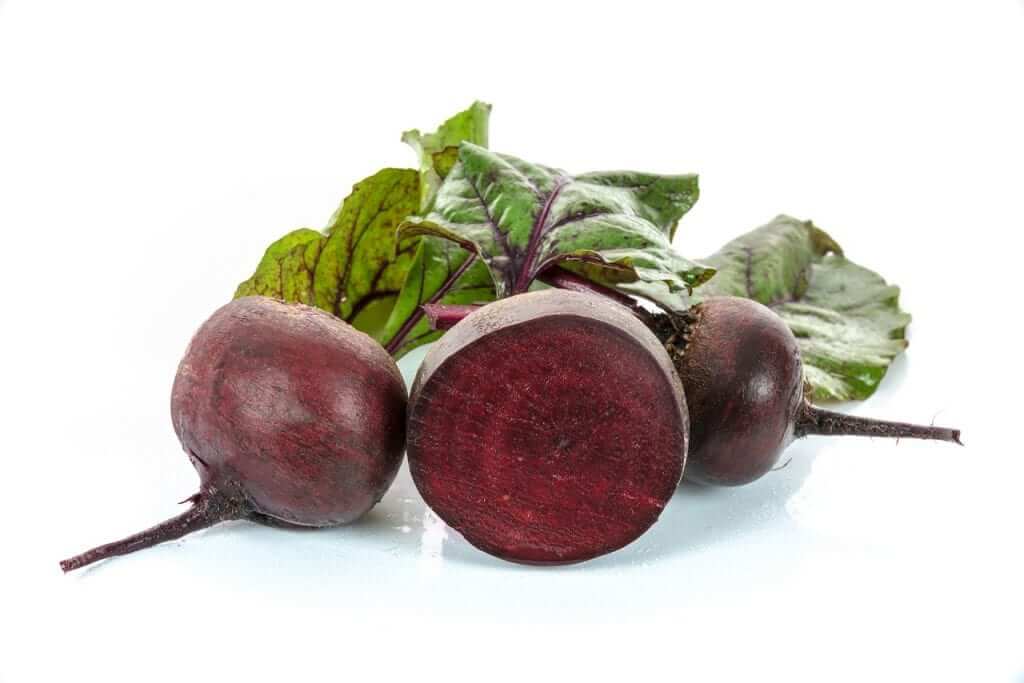 Feeling a bit stressed? Don’t feel beat. Eat beets. Research on beets has found that this root vegetable can help decrease blood pressure. In fact, just three hours after consuming beet juice and blood pressure can lower up to -10.4/8 mm Hg.
Feeling a bit stressed? Don’t feel beat. Eat beets. Research on beets has found that this root vegetable can help decrease blood pressure. In fact, just three hours after consuming beet juice and blood pressure can lower up to -10.4/8 mm Hg.
Furthermore, these healthy carbs improve blood pressure even more efficiently when the heart is under stress. Therefore, beets are an excellent addition to the meal plan of anyone looking to hit the gym.
Butternut Squash
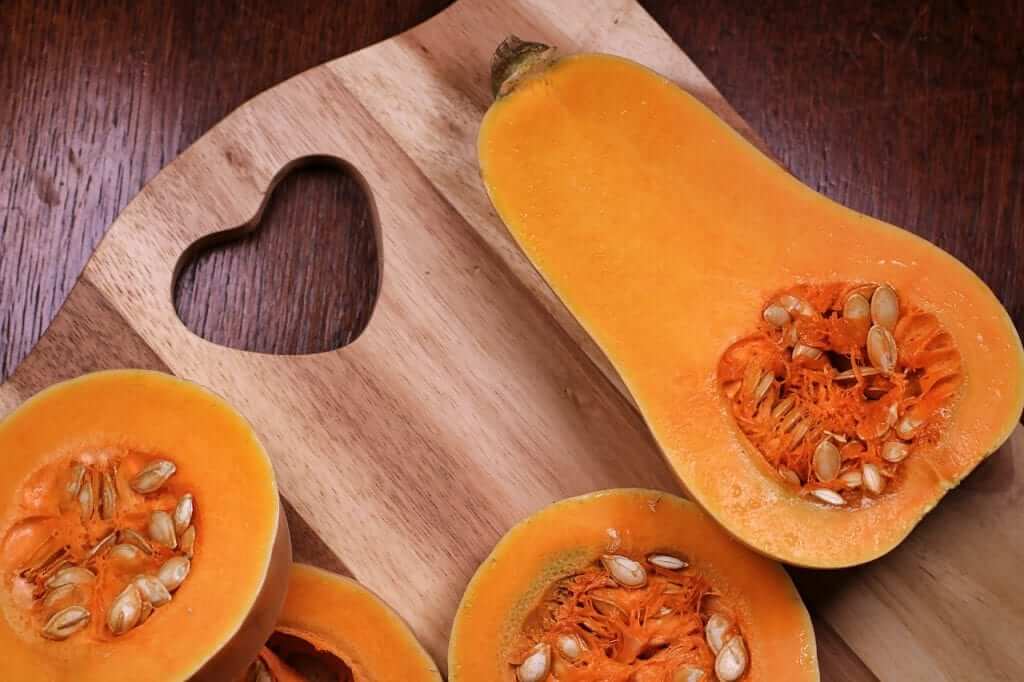
What makes butternut squash a staple on our list of healthy carbs is that this fruit has a wide variety of nutrients. While these nutrients make butternut squash an excellent food for someone looking to improve their skin and digestive health, the benefits don’t end there.
Butternut squash is a must for someone looking for complex carbs to help lose weight. These healthy carbs have a litany of a substance known as Dehydrodiconiferyl alcohol.
Dehydrodiconiferyl alcohol has shown to disrupt cellular processes. For those worried about weight issues, one of the processes Dehydrodiconiferyl alcohol sticks its nose into is lipogenesis.
Lipogenesis is when our body breaks down proteins and stores them in fat cells for future energy consumption. During this process, many enzymes will interact with the fats and influence how they are distributed. One biomarker that helps turn our food sources into fatty tissue is 3T3-L1 adipocyte.
Thankfully, research indicates that Dehydrodiconiferyl alcohol serves as an antagonist for this peptide. As a result, 3T3-L1 adipocyte doesn’t convert our energy into waist-thickening adipose tissue.
Pomegranate
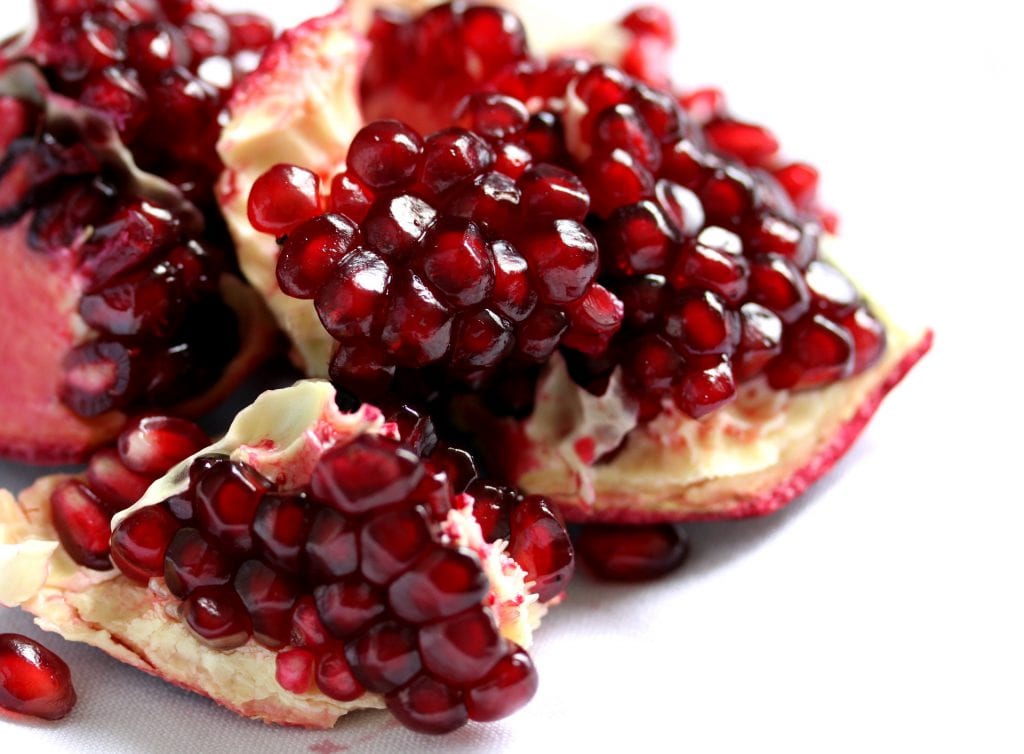
Need to boost your nitrogen oxide production? Look no further than pomegranate seeds. These healthy carbs raise nitric oxide levels in the body. Nitric oxide plays a crucial role in breaking down plaques in the arteries.
These sticky plaques are caused by refined sugars, carbs, and artificial ingredients found in our food. Nitric oxide works as a pressure washer, breaking up the residues. High levels of nitric oxide makes pomegranates one of the most heart-healthy complex carbs out there.
In addition to improving cardiovascular health, pomegranates boast a load of antioxidants. Research indicates these tiny fruit pearls contain three times the antioxidants than green tea!
Green Peas
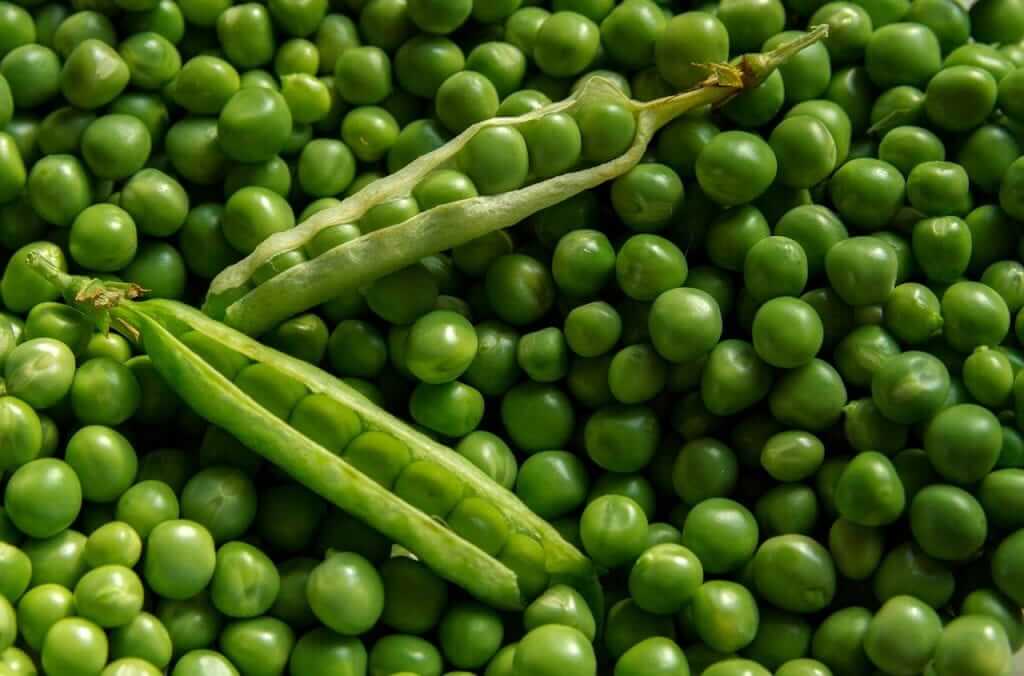
These healthy carbs have strong anti-inflammatory characteristics. This distinction is much in thanks to green peas’ high concentration of saponins.
Oddly enough, saponins have a soap-like texture. However, don’t go washing your armpits with peas just yet! You can cleanse your inside with peas, though.
Studies on saponins have found that these phytochemicals exhibit antimicrobial tendencies. In fact, saponins exhibit antagonistic characteristics in the presence of harmful bacteria, Candida.
Whole Wheat Pasta
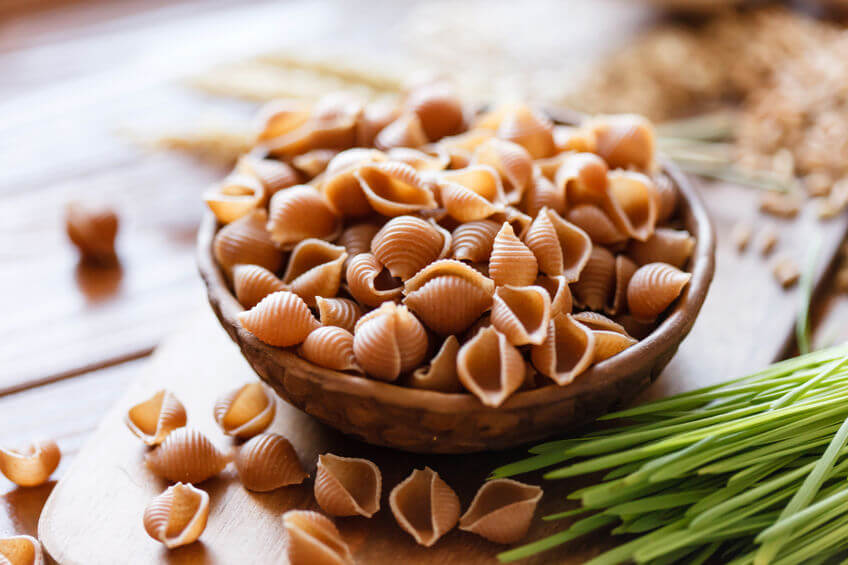
Run for the hills, because whole wheat contains gluten, and gluten is evil! Not quite, but that’s another battle for another time.
If you do have celiac disease or gluten allergies, you likely should avoid wheat, of course.
For others, though, while you are urged to steer clear of white pasta, and you don’t want to overdo the whole wheat, you don’t need to give your Italian night up on the menu plans, either.
Because organic whole wheat pasta actually has three essential nutrients that make this meal option high in healthy carbs.
It has bran, which a rich source of dietary fiber. In addition, whole wheat pasta has endosperm, which contains a litany of complex carbs. Lastly, whole wheat pasta also has an inner layer known as germ. The germ is rich in micronutrients, including B-Vitamins and Vitamin K.
Did you enjoy and appreciate this article? Let me know your comments below ↓ ↓ ↓, and please SHARE it with others, so we can clear the carb myths and they can benefit, too 🙂



Excellent article: concise & factual! I did think soaking nuts and rice removes most of the phytic acid -more than 50%
Thank you Brian 🌈 I understand it better now the carbs issues!
just watch the pesticides and herbicides[eat organic if you can afford it] definately don’t eat wheat.oats corn squash[unless you grow it] watch out for beets[sugar] yes it’s hard to trust our food supply——-no soy no canola
Watched a podcast that reported if you can’t afford organic soak fruits and vegetables in 1 Tablespoon of baking soda to 1 gallon of water for 10 minutes.
That’s the big industry making it seem like you can wash off pesticides. Maybe you can a little, but that stuff is INSIDE your fruits and veggies. People think bananas are ok not organic. But just think about the spray…it coats the soil, goes right to the roots. These chemicals have been disrupting hormones and more for generations! It’s never ok for your body to eat chemicals. Stresses your body so much. But if you can’t afford it then that’s something you know you have to deal with internally. But for those who can, avoid at all costs. You can NOT soak your fruits and veggies to remove pesticides. That’s a huge lie the the industry wants you to believe so they can keep you buying.
Good info Brian. Now I need to expand my recipe collection to include good dishes with amaranth, barley, buckwheat and beets. These are healthy carbs I never cook with currently. I will try and pick one and incorporate it next week. Thanks for the inspiration!
Brilliant article. Clear and informative.
Thanks Brian, great info to have.
Terrific information Brian, thanks VERY much! So wonderful to have so much summarized in one place – these foods are often talked about as “healthy”, but the “why” is extremely helpful for a self professed health nerd like myself who wants the details for sharing with others! Thanks too for the wonderful “Best Years” summit – your efforts are truly appreciated.
Brian, thanks for helping us to chose healthy foods as carbs. Ihave always tried to chose wisely and I always appreciate your input thanks again.
another good reason to include carbs in our diets is that that is what our brains eat
Thank you very useful now I know healthy and not healthy carbs .
Thank you for this very useful, concise and occasionally hilarious compilation.
Your articles are among the 21 top carbs!😃
Thanks, Brian. I think couscous is a durum wheat product/pasta. This grain is high in gluten and if not organic and grown in the US probably sprayed with Roundup which is a problem.
Inspiring and clear information, Brian. Thank you.
I’m glad that I already eat a lot of the proposed foods, but buckweat and amaranth have been off the menu for years and I’ll reintroduce them.
Thanks for this article.
Thanks for all the information, Brian. Except for amaranth and couscous, I have used all the other food items above, some more frequently than others. Your articles are very inspirational and full of knowledge backed by science and research. All the best to you.
Helen
Brian, you are a wealth of information and you never cease to amaze me!!
Thank you for this extensive research. Always good to remember which are the real healthy foods
Too heavy for me on the grain recommendations. Prefer raw vegan foods.
Great healthy information to be used on my lecture in spreading out a healthy lifestyle.
Thank you
Hmmmm A few more additions to mealtime coming up!
Rdg your lists of ‘healthy’ I see they have been avoided by me over the years as too healthy or foods from other world cultures.
Ok, so back to the drawing board… hmmmm. Recipe hunt!!! thx Brian for your so easy to read and informative work!.
. excellent article Brian.
Would it be possible to put this in a printable form without the pictures? I would like to add this to my recipe book.
Thanks
Great article! I am going to to refer to your top 20 when I grocery shop. Thank you.
Very informative, now I will watch what carbohydrates I eat. I used to eat lots of fruits. So this is eye opening! Thank you 🙏 Petula
This list has excellent explanations which makes these choices more reasonable. I grew amaranth last year – WHAT A MAJESTIC BEAUTY! I cooked the leaves like spinach. Arugula is crazy easy to grow too. This year I’m finding some all over my yard. Since I don’t use any chemicals, I can eat them fresh! I’m looking forward to making some soups w those squashes, barley, and peas! Thanks for this list!
Excellent article thanks!
Thanks, Brian, for this wonderful information. I’ve avoided grains for many years to lose weight. I believe I will be adding them back into my diet.
Great information. Eye opener for the differences between simple and complex carbs. Thanks for this information.
It would be helpful to have a follow up article about how to best cook each item to retain as much of the nutrients as possible.
Excellent read. Saving this article. Can’t wait to go shopping st our new natural market! Everything looks so good🌻
Useful source in building my own reference file. Thank you.
How do these fit into a diabetic diet?
Type 2
Hi, Jennifer:
Search YouTube for the “Mastering Diabetes” channel. You can also Google their website.
I have a friend in his 60s that is (was) a Type 2 Diabetic who followed a “low-carb” diet for many years, while watching his weight slowly but steadily increase. He was told to limit carbs — even whole food carbs — because they were allegedly bad for blood sugar and weight. However, the approach wasn’t working for him.
Since he was longing for such foods and low-carb wasn’t working anyway, he followed my suggestion to try the Mastering Diabetes approach. Within seven weeks, he had lost 21 pounds, had more energy (not surprising), was enjoying the ability to eat fruits and starchy vegetables again, and his fasting glucose levels dropped quite a bit.
Also, because his joints weren’t aching as bad, he was able to resume walking and improve his mobility…which led to less back pain and sleeping better. It’s all connected. He’s still following the plan and improving, so it’s not an overnight fix.
Please understand, I have no affiliation with that program or its creators. My friend paid NO MONEY for any of their products and simply used all the freely-available information they offer on their YouTube channel, website, and podcast.
Maybe this will help you, maybe not. Have a look and discuss it with your doctor.
Good luck, whatever you do.
SUCH A GREAT ARTICLE. I RECALL IN THE 80’S A CLOSE FRIEND TRYING THE Atkins diet AND STARTED HAVING HEART PALPITATIONS.
LOVE THIS LIST, USE THIS LIST, RECOMMEND THIS LIST.
Loved the article!!! Excellent information. Thanks.
Great article, informative and interesting.
Explained why I feel so much better after eating certain foods.
Will be adding a few of these to my grocery list.
Superb article which has answered many of my questions. I am headed to the market to enrich my diet!! Many thanks! Gloria B
Great information. I need to copy this list. (I believe the “lentils” are actually yellow split peas…..)
A refreshing and interesting article with pertinent information!
I was a participant of this type of diet for many years and enjoyed exceptionally good health and a pleasant weight. After including several of the foods from the other side of the list I began to have Health issues which lead to weight gain and more health issues!
Struggling to get back to a Healthier relationship with My diet and weight!
I’ve begun to lose weight again and I’m feeling better!
Thank you SO much – this information is just what I have been looking for for over 2 years! Easily understandable too! Thank you.
Informative info. Thank you.
Good to know that eating pomegranate is good for my blood vessels and heart. Thanks for the information!
Thanks! Helpful information.
Very helpful article! Just what I was looking for! Thanks!